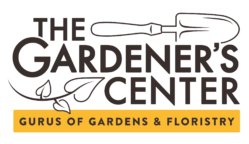Let's Talk Gardening with Guru Sean
We Have a Whole Lotta Love for Spring-blooming Phlox Subulata
Whether you know it as Creeping Phlox, Moss Phlox, Mountain Phlox, Mountain Pinks, May Pinks… Phlox Subulata has soooo many great attributes and a garden addition you don’t want to overlook…
For one, it’s GORGEOUS! It’s also an eastern U.S. native perennial, pollinators love it — but — deer, rabbit and woodchucks don’t!
There’s a lot more to love — watch Sean’s video and see if you don’t fall in love with it as well! A transcript of this video is available in The Buzz Blog.
Spring Pruning Hardy Perennials: Itoh Peonies & Lavender
We know you love ‘em because we sell a ton of ‘em! But do you know why you should be waiting until spring to give your Itoh Peonies and Lavender a prune?
Hardy perennials, like Itoh peonies and lavender, behave differently than most herbaceous perennials (those that die back to the ground in the winter). And because of that, they need to be given special considerations when it comes the WHEN and HOW you prune them.
Sean goes into the particulars, including a special benefit for leaving your peony stems unclipped throughout the winter. Spoiler alert… They’re a condo for beneficial insects!
Proper Spring Care for Hydrangea Macrophylla, or Mophead Hydrangea
Every year in the spring we start getting tons of inquiries regarding everyone’s favorite hydrangea, the hydrangea macrophylla, also known as mophead hydrangeas or big leaf hydrangeas. And most of those questions and inquiries are about pruning.
Sean, our horticulture guru here at The Gardener’s Center, says, “Stop! Back away from your pruners!”
Sean has solutions to make sure your hydrangea macrophylla stays healthy and producing plenty of blooms all season long. A transcript of this video is available in The Buzz Blog.
Say Howdy to Hellebores (Lenten Rose)
Sean, the horticulture guru at The Gardener’s Center discusses why you should have hellebores in your life, especially for our Zone 6/7 coastal Connecticut gardens. These beauties are shade-loving perennial with early winter to spring blooms; evergreen and live for decades; and works great as a spring container “thriller,” then into your garden for year-round interest. Watch Sean’s video for more details and learn why hellebores are a worthy investment. A transcript of this video is available in The Buzz Blog.
Spring Lawn Seeding, Fertilizing & Treating
Sean talks about which products to use and when to seed your lawns, when to fertilize, and when to treat weeds and crabgrass. Most importantly, he wants you to remember that TIMING IS EVERYTHING!
Proper Potting Tips for Growing Healthy Annuals in Containers
Sean, our horticulture expert, provides pro tips for potting your annuals in containers to ensure maximum growth and health for a long growing season. A transcript of this video is available in The Buzz Blog.
Hardy Succulents: Sempervivum & Sedum
Our selection of hardy succulents are visually stunning with their eye-catching texture, earthy color palette and intricate patterning. But as they say, looks aren’t everything…
See why hardy succulents like sempervivums (AKA Hens and Chicks) and ground cover sedums check the “great personality” box as well. A transcript of this video is available in The Buzz Blog.
A Rose Review by Any Other Name...
Sean reviews attributes and differences between our popular rose varieties: David Austin Roses (aka English Roses or Cabbage Roses), Shrub Roses, Drift Roses and Climbing Roses. A transcript of this video is available in The Buzz Blog.
What's So Special About Agastache?
Sean professes that Agastache is his all-time favorite perennial!
There are loads of reasons to love agastache (also known as Hummingbird Mint and Giant Hyssop), including they are very long bloomers, they are critter and pest resistant, they don’t need supports or stakes to stay upright. And as you’ll see in the video, holy cow do the BEES LOVE THEM!
Sean addresses a few of the more common questions he gets asked about agastache… “Is this a native plant?” and “Am I doing something wrong? My plant only seems to live two or three years.” A transcript of the video is available in The Buzz Blog.
Hydrangea Paniculata
Sean, the garden guru here at The Gardener’s Center, talks about his favorite flowering shrub, Hydrangea paniculata.
You’ll hear these beauties called by a few different names — Hydrangea paniculata, Panicle Hydrangea and Pee Gee Hydrangea. However you refer to them, you should know they are Sean’s favorite hydrangea and favorite blooming shrub, and for good reasons!
Sean covers a little hydrangea history, a few of the over 100 varieties, where to plant them and how to prune to them. Find out why you’ll want to add them to your garden and landscape. A transcript of the video is available in The Buzz Blog.
Native Hydrangea
You may not immediately think of a hydrangea when you think about native plants because most of the hydrangeas we typically grow are from Europe and Asia.
Introducing Hydrangea arborescens, commonly known as “smooth” hydrangea. According to Sean, our horticulture guru here at The Gardener’s Center, smooth hydrangeas are native to a large part of the eastern United States. The two Sean reviews in the video below are Pinky Pollen Ring Hydrangea and the more common Annabelle Hydrangea. A transcript of the video is available in The Buzz Blog.
We Like Big Begonias and We Cannot Lie
Let’s talk about begonias and why you should be planting them! These incredibly versatile and easy-to-care-for bloomers are Sean’s favorite annual for a number of reasons. Begonias come in a variety of gorgeous colors but did you know they are one of the most forgiving annuals in terms of light requirements? They can really be placed anywhere outside. Watch the video to learn why begonias are going to be YOUR favorite annual, too! A transcript of the video is available in The Buzz Blog.
We're Pretty Smitten with Peonies
Even if you don’t know a lot about plants, you probably recognize the peony. Sean, our horticulture guru here at The Gardener’s Center, says peonies “are like roses” in that people are very familiar with them.
But are you familiar with the two different types of peonies? Sean discusses planting and care so you can enjoy these beauties in your coastal Connecticut garden. A transcript of the video is available in The Buzz Blog.
Catmint (Nepeta) Will Have Your Pollinators Purring
Nepeta, or Catmint, comes in tall-to-compact varieties, are beautiful, long-bloomers, drought tolerant and adored by pollinators like bees, butterflies and hummingbirds. Who doesn’t love ‘em? Deer, rabbits and woodchucks, that’s who. Sean has pro tips for selection, placement, care and easy maintenance for keeping them tidy and getting them to re-bloom. A transcript of this video is available in The Buzz Blog.
Important Lavender Lessons for Lavender Lovers
Love lavender but it keeps letting you down? Unless you’re living right on the coast with its sandy soil, you’ve most likely struggled with keeping your lavender alive for more than a season or two. That’s partly due to our climate, but your soil composition has a huge amount of impact on your success. Give Sean’s video a watch to learn how to properly prepare your soil, and learn about how Phenomenal Lavender may be the hybrid answer you’ve been searching for. A transcript of the video is available in The Buzz Blog.
Cautions & Better Options for Ornamental Grasses
Oftentimes we have customers asking for “beach grass,” but they usually mean one or any of the ornamental grasses Sean is discussing with us here. As always, Sean is loaded with information, and shares how ornamental grasses were introduced to the American commercial and residential landscapes in the 1990s.
Learn about his cautions when using certain non-native grasses like Miscanthus (commonly known as Maiden Grass) or Pennisetum (commonly known as Fountain Grass). Miscanthus Sinensis (Sinensis, meaning of China or from China) is on the Connecticut invasive plant list, and he explains this is why he only brings in Miscanthus in small sizes that are better used in fall containers rather than the landscape. Sean also brings them in as immature varieties, and in the fall, which does not give them enough time to flower and spread ahead of the winter freeze. Mindful practices like this will greatly minimize the impact on our native spaces.
Finally, Sean shares with us some truly beautiful options in the ornamental grass family that are better choices for landscaping, such as Panicum and Andropogon.
Vines, Climbers, Ramblers & Sprawlers
Sean has the lowdown on plants like clematis, mandevilla and diplodenia and how they climb. He explains the difference between tropical vs. hardy perennial climbers and what to expect of them, how to use them and where.
The Buzz on Native Milkweeds: Asclepias Incarnata & Asclepias Tuberosa
Sean, the horticulture expert at The Gardener’s Center, is here to give us insightful information on two different types of native milkweed: Asclepias Incarnata (Swamp Milkweed) and Asclepias Tuberosa (Butterflyweed). A transcript of this video is available in The Buzz Blog.
Overwintering Hardy Plants in Containers
As we get ready for cooler temps, let’s review what you need to know about overwintering your hardy container-planted perennials. Sean, our horticulture guru, identifies what you need to be aware of when overwintering your hardy potted perennials. These hardy plants fall into three groups: deciduous, conifer evergreens and broadleaf evergreens. Deciduous and conifers are easy enough to care for, but the broadleaf evergreens, such as boxwood and rhododendrons, are the most challenging, especially when they experience prolonged below-freezing temperatures. Watch the video to learn what you need to know about overwintering your potted perennials. A transcript of this video is available in The Buzz Blog.
Winterizing Your Outside Containers
Learn how to safely take care of your plant pots over the winter. Sean considers the four groups of pottery: terracotta, cast stone/concrete, fiber glass/lichen fiber and finally, plastic. He explains that it’s not the cold temperatures that can damage your pots; it’s the precipitation they absorb or contain, followed by freeze/thaw cycles. All Sean’s helpful advice can be applied to garden statuary and bird baths. A transcript of this video is available in The Buzz Blog.
Proper Hydrangea Paniculata Pruning
Hydrangeas are always a hot topic according to Sean, our horticulture guru here at The Gardener’s Center. Especially when it comes to pruning them. Unlike the mopheads, the Paniculatas only flower on new growth. So the more you prune them back, the more growth you’re going to stimulate. A transcript of this video is available in The Buzz Blog.
Fall-Blooming Native Perennials, pt1
Sean provides an overview of some of his favorite fall-blooming native perennials: Eupatorium Dwarf Joe-Pye Weed and Hardy Ageratum + New England Aster • New England Aster Purple Dome + Vernonia Iron Butterfly.
September and October are the best times to plant AND enjoy their blooms. With these natives you’ll have gorgeous blooms that will extend well past other plants that have finished blooming. These lovelies are also invaluable to our pollinators: bees, butterflies and migrating hummingbirds will certainly thank you for it! A transcript of this video is available in The Buzz Blog.
Fall-Blooming Native Perennials, pt2
Sean, the garden guru here at The Gardener’s Center, talks about fall-blooming native perennials in the Asteraceae (Aster) family.
Native to eastern North America, Sean reviews Aster Novae Angliae (New England Aster); Coreopsis Tripteris (Tall Coreopsis); and Liatris Scariosa Nieuwlandii (Nieuwland’s Blazing Star). All provide fall food for bees and butterflies (so much so that Sean watched a kaleidoscope of butterflies following his cart as he placed them on the benches outside)! A transcript of the video is available in The Buzz Blog.
And Even More Late-Blooming, Pollinator-Loving Perennials
Sean talks about perennials that are at their best at the end of summer/beginning of fall. He’ll show you some bee-lovers and butterfly-friendly natives, as well as some different shade-lovers that are many times overlooked.
In this video, Sean reviews Solidago (Goldenrod), Heliopsis (Ox Eye Daisy,), Veronica (Ironweed), Anemone (Windflower), Tricyrtis (Toad Lily), and Hearty Begonias.
Fall Ornamental Cabbages & Kales
Have you considered adding ornamental cabbages and kales to your landscape or containers? You should! These beauties are a fall staple, but we should really think of them as a fall AND winter staple. Kales and cabbages have a very wide temperature range in which they thrive — 75 degrees all the way down to the mid 30s — this is their “sweet spot.” They’ll even survive temps well below freezing. And the cooler it gets, the more their color intensifies! They do well and look great in both the landscape and in containers.
Autumn Color in the Garden
HSean showcases three perennials: the Lady in Black Aster, the ever-popular Montauk Daisy, and true perennial garden mums. These are great options for late-season color and, because their bloom time is late in the season, they provide some of the last meals for pollinators while they are getting ready to hibernate or migrate. He also talks about Scotch Heather, a little evergreen shrub with great texture and flower color that looks fantastic in those fall pots, and a selection of annuals that become more colorful as the weather gets colder.
Perks for Planting in the Fall
Fall is the BEST time for perennials, shrubs, trees and grass seed to take root!
We generally think of spring as the planting time, which is it… But fall — September, October and November —is the optimal time to get your plants in the ground. Sean, our gardening guru, explains why in this video. Check it out — then let’s get get to planting so your plants can get their underground party started! A transcript of this video is available in The Buzz Blog.
Caring for Your Fresh-cut Christmas Tree
When selecting your tree, you need to know the optimal time to purchase and what’s okay (and not) with needle drop. In caring for your tree, you need to know when and why it needs a fresh cut as well as the do’s and don’ts for watering and setting up. A transcript of this video is available in The Buzz Blog.
Shopping for Plants on Monrovia.com
Sean talks about another great way to research and procure exactly the plants you are looking for through our partner, Monrovia. We proudly carry many of their stunning plant, but we don’t carry all of them. With Monrovia.com, you can search for the exact variety, size, and color or plants you want.
Caring for Your Living Christmas Tree
Sean highlights the critical things you need to know if you choose to have a living Christmas tree indoors.
Things you need to keep in mind… The tree must acclimate to warmer temps before coming inside. It should be inside for no more than 7 days, tops. It needs to acclimate to cooler temps before moving outdoors. Watch the video for all of the deets! A transcript of this video is available in The Buzz Blog.


